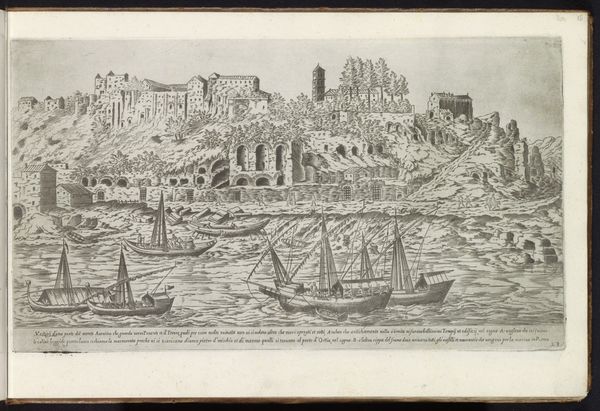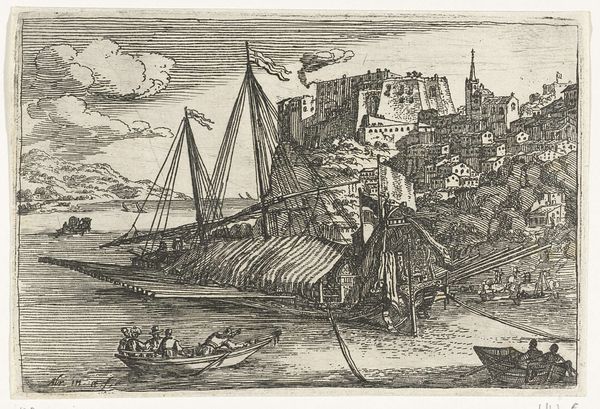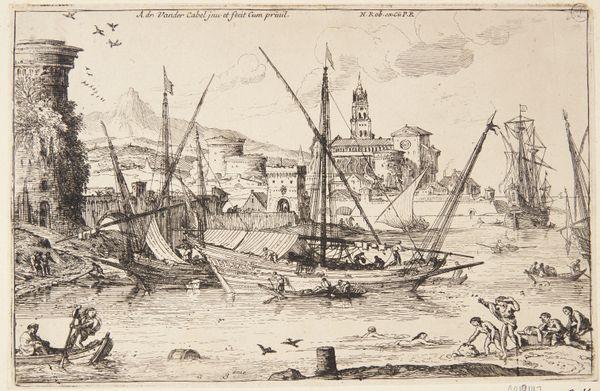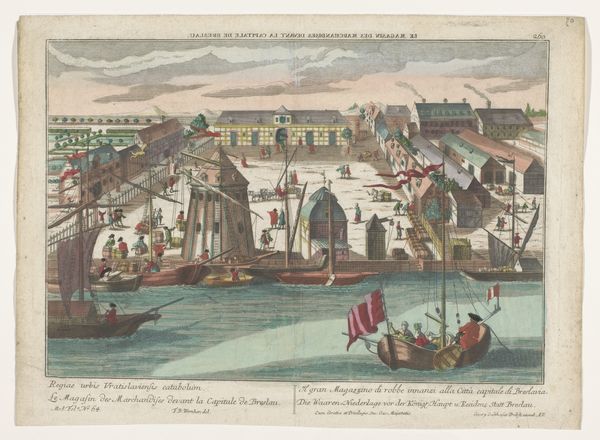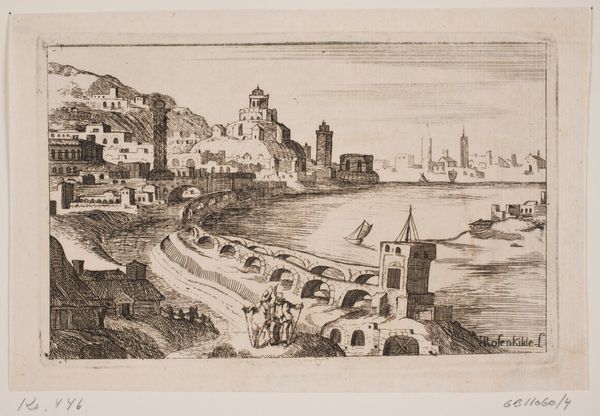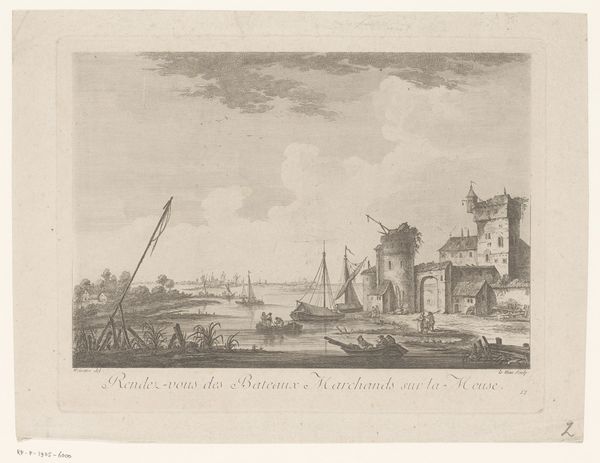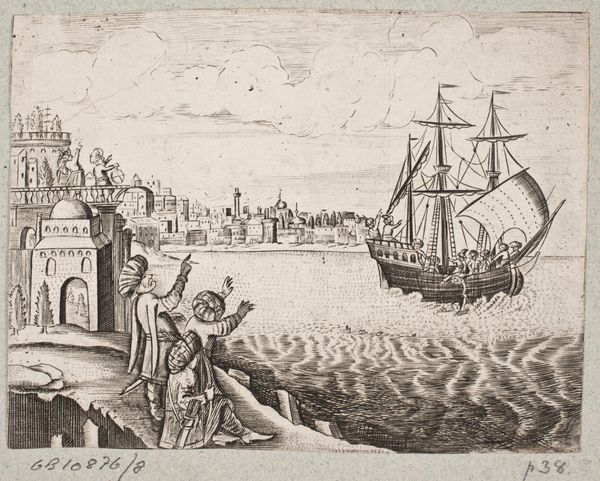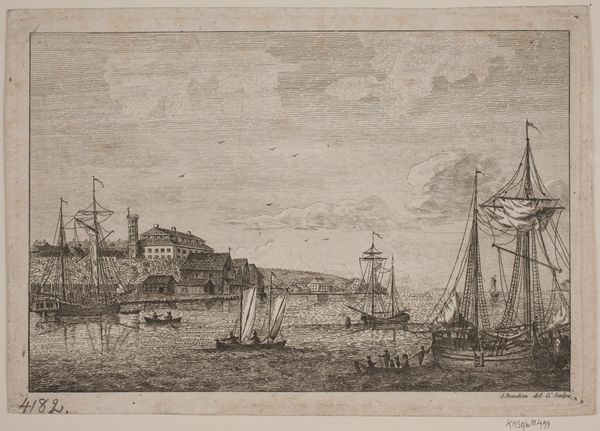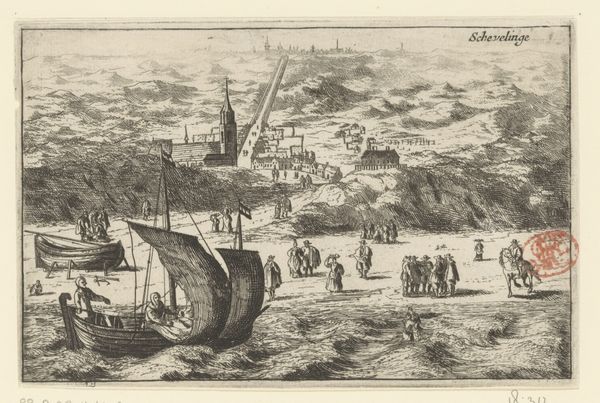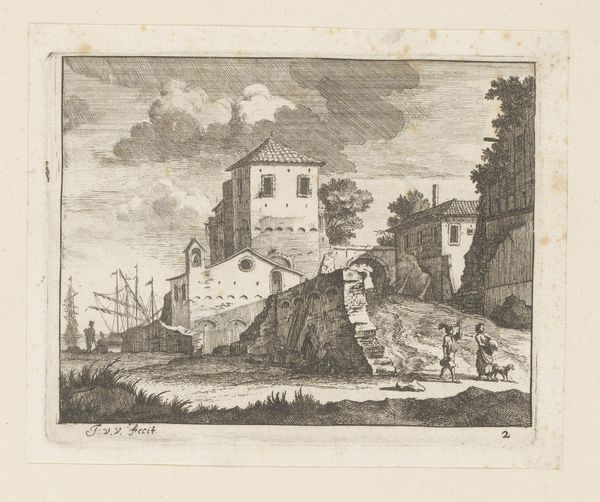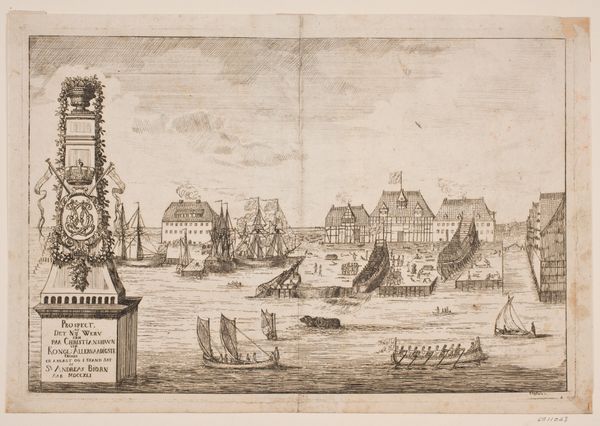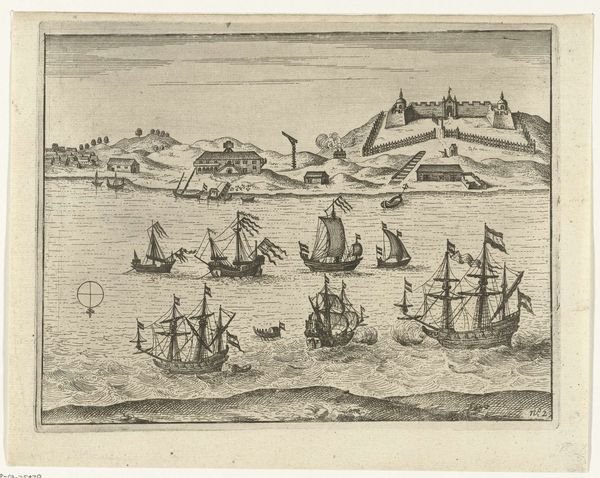
Plate 21: view from the west of ruins of the Aventine Hill, Rome, with boats on the river Tiber in the foreground, from the series 'Ruins of the antiquity of Rome, Tivoli, Pozzuoli, and other places' (Vestigi della antichità di Roma, Tivoli, Pozzvolo et altri luochi) 1606
0:00
0:00
drawing, print, etching
#
drawing
#
ink drawing
#
baroque
# print
#
etching
#
landscape
#
cityscape
#
italian-renaissance
Dimensions: Sheet: 6 13/16 x 10 15/16 in. (17.3 x 27.8 cm)
Copyright: Public Domain
Editor: This etching, "View from the west of ruins of the Aventine Hill, Rome," by Aegidius Sadeler II, dating back to 1606, really strikes me. The detail is incredible. I am drawn to the depiction of nature reclaiming architecture in this evocative Italian cityscape. What stands out for you? Curator: For me, this image is about time, memory, and the persistent dialogue between nature and human creation. Look at the intricate details: the solid stone against the softness of trees, and how both are gently mirrored on the surface of the Tiber river. It's a vision, not of stark contrast, but of a gradual melding. What do you think that says about our place within a bigger story? Editor: I think it captures the transient nature of human endeavors and the eternal endurance of nature. The boats imply commerce, a fleeting moment of daily activity framed against these eternal ruins. Curator: Exactly! The daily rhythms played out against the backdrop of these grand, ruined aspirations...there is something poetic about that tension, a sense that all of our efforts are momentary ripples in the face of the vast river of time. It seems Sadeler is prompting us to ponder our impact in a larger cosmic scheme. Does it influence how you perceive the piece, then? Editor: Yes, definitely. It makes the boats much more poignant, somehow, they represent a kind of perseverance, but a very humble kind, which are a stark contrast from these glorious ruins of the city. Curator: Right? It's about understanding the scale. Each boat with it's journey seems so short and full of striving, set against what remains of a civilization that also was a flash in history's scope. It's both humbling and oddly reassuring. I love when a piece opens a space to reflect on such expansive thoughts.
Comments
No comments
Be the first to comment and join the conversation on the ultimate creative platform.
